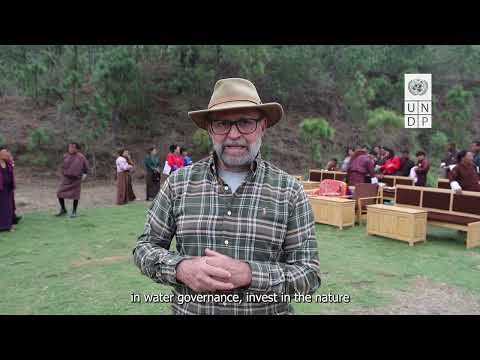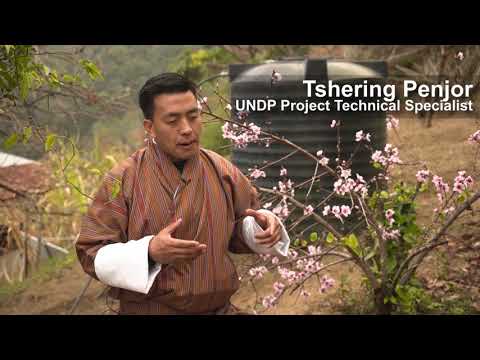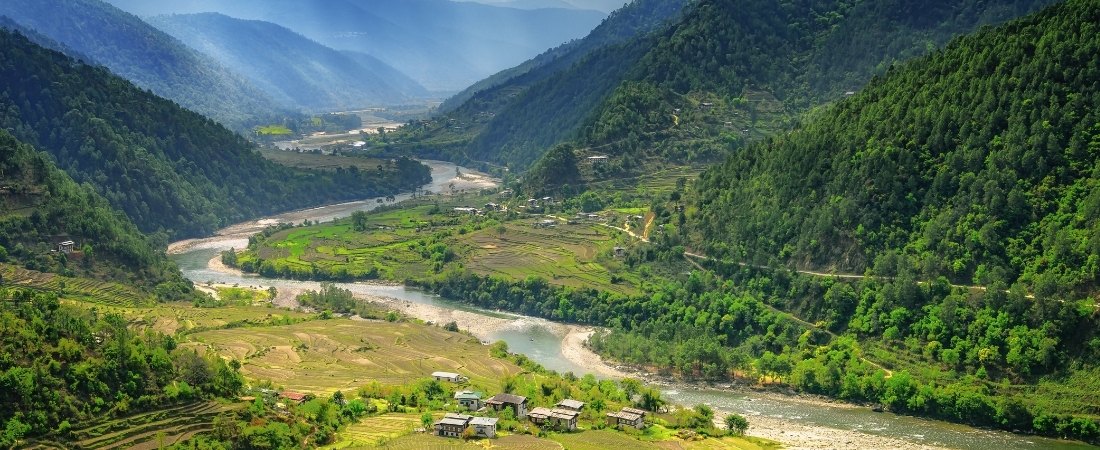
Photo:
Bhutan is highly vulnerable to the adverse impacts of climate change. This landlocked least developed country has a fragile mountainous environment and is highly dependent on agriculture. Hydropower plays a significant role in the country’s economic development, placing increased challenges for the management and use of water. The country also faces increasing threats from climate hazards and extremes events such as flash floods, glacial lake outburst floods, windstorms, forest fires, landslides, and the drying-up of streams and rivulets.
As a result of climate change, summer months are predicted to become wetter and warmer while winter months are expected to be drier. These result in the abundant availability of water in warmer months but decreased accessibility during winter months. Despite being endowed with the highest per capita water availabilities, Bhutan suffers from chronic water shortages, and access to water is a key determinant of people’s vulnerability. Given the mountainous terrain, climate-induced hazards like flashfloods and dry spells during winter, are likely to deteriorate the quality and quantity of water required to meet hygiene and sanitation needs. Inability to meet the demand is likely to further accentuate the impacts of climate change on the local communities. The COVID-19 pandemic reinforces the need for access to adequate and clean water for health as well as food and nutrition security.
In the face of water scarcity there are opportunities to enable adequate, clean, and assured water supply to the population and increase climate resilience for rural and urban communities. The Royal Government of Bhutan has prepared a water flagship programme to provide assured drinking and irrigation water for the country in the face of climate change.
The “Advancing Climate Resilience of Water Sector in Bhutan (ACREWAS)” project will form a core part of the national plan to provide integrated water supply for four Dzongkhags (districts) in Bhutan that comprise the major parts of the upper catchments of the Punatsangchhu River Basin management unit. The project interventions will increase the climate resilience of rural and urban communities. Considering the spatial interlinkages and dependencies between land use, ecosystem health, and underlying causes of vulnerability to climate change, this approach will ensure that targeted catchment watersheds are managed to protect and restore their capacity to provide sustainable ecosystem services and bring about efficiency, effectiveness and climate resilience within the drinking and irrigation water infrastructure network. The project will support critical catchment protection by adopting climate-resilient watershed management principles. Such practices are anticipated to reduce threats from climate-induced hazards such as floods, landslides and dry spells, while at the same time improving the overall adaptive capacity of project beneficiaries. Additionally, these measures will also ensure that downstream climate-resilient infrastructure development works are managed in tandem with upstream initiatives.
- District
- Country Office
- National Governments
- United Nations Development Programme (UNDP)
34,029 direct beneficiaries, 38,660 ha of land managed for climate resilience
- Government of Bhutan
- Global Environment Facility (GEF)
- United Nations Development Programme (UNDP)
Expected outcomes
Outcome 1: Strengthened water governance, institutions, and financing mechanism in support of climate-resilient water management.
Outcome 2: Vulnerable natural water catchments in the target river basin (Punatsangchu River Basin) restored, sustainably managed, protected and their ecosystem conditions improved.
Outcome 3: Enhanced adaptive capacity of water infrastructure to climate-induced water shortages and quality deterioration through climate-proofing, private sector engagement, and technology deployment.
Outcome 4: Strengthened awareness and knowledge sharing mechanism established.
- Image
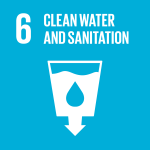
- Image

- Image
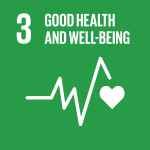
- Image

- Image
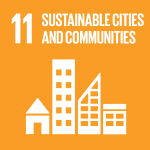
- Image
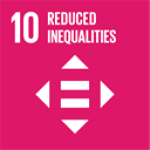
Country profile
Bhutan is a small, landlocked country with an area of 38,394 km2 in the Eastern Himalayas located between China in the north and India in the south, east, and west. The dominant topographic features consist of the high Himalayas in the north with snowcapped peaks and alpine pastures; deep north-south valleys and hills created by fast-flowing rivers forming watersheds with temperate forests in the mid-range; and foothills alluvial plains with broad river valleys and sub-tropical forests in the southern part. With about 50% of the geographical area under slopes greater than 50% and about 52.45% of the land area lying above 2600 meters above mean sea level (RNR Statistics, 2019), Bhutan’s topography is almost entirely mountainous and rugged. The mountainous landscape also makes the delivery of infrastructure and services difficult and expensive. Due to its fragile mountainous ecosystem, the country is highly vulnerable to impacts of climate change and extreme weather events. The situation is further worsened by the country’s low adaptative capacity, poor economic status constrained by limited financial, technical, and human capacity.
It is one of the least populated countries in mainland Asia with a total population of 727,145 with a growth rate of 1.3% out of which 47.7% and 56.71% of the population under the age of 29 (PHCB, 2017). About70.77 % of the total land area is under forest cover and 51.44% of the total area is designated as protected areas comprising of national parks, four wildlife sanctuaries, a strict nature reserve, biological Corridors, and a botanical park (FRMD 2017). The Constitution of the Kingdom of Bhutan (2008) mandates 60% of the country to remain under forest cover for all times to come. Some of the rarest flora and fauna on earth flourish within its high forest cover and pristine environment supported by strong conservation efforts and a good network of Protected Areas. The country’s biodiversity includes 15 vulnerable, 20 endangered, and 13 critically endangered seed plants; 13 vulnerable, 11 endangered, and two critically endangered mammal species; 22 vulnerable, four endangered, and four critically endangered bird species; eight vulnerable and three endangered fish species; 11 vulnerable, five endangered and two critically endangered amphibians, and one vulnerable butterfly (MoAF, 2018).
Agriculture is a very important economic activity for Bhutan. The agriculture sector comprises of farming, livestock, and forestry which continues to be a major player in the country’s economy. With only 2.75% of the total land area used for agriculture, the sector accounted for 15.89% of GDP in 2018 and employs about 48.63% of the total economically active population. With the majority of the population relying on agriculture, the sector is highly vulnerable to climate change. Also, characterized by remoteness and inaccessibility, marketing and large-scale commercialization are significant challenges for Bhutan. About 56% of the economically active population engaged in agriculture are female rendering women more vulnerable to impacts of water shortages in agriculture (RNR Statistics, 2019). Hydropower and tourism are the other key economic drivers.
The proposed project will intervene in four Dzongkhags (districts) that form a major part of Punatsangchhu river basin, one of the five main river basin management units in Bhutan as well as the largest in terms of geographical area and among the most climate-vulnerable watersheds in the country. The project area covering 883,080 Hectares comprising 23 percent of the total land cover of Bhutan, and 22 percent of all water bodies in the country. The project area covers 16,693 hectares or 16 percent of cultivated area in Bhutan (Agriculture Statistics, 2019). The majority of the population within the project Dzongkhags are engaged in agriculture. Overall, the agriculture sector has engaged 47 percent of the total employed population in the project area comprising 67.71 percent of the female population and 34.34 percent of the male population. Other major sectors of employment include construction which engages 13 percent of the population and electricity/gas/water which engages 10.72 percent of the population. These two sectors employ only 2.5 percent of the female population and 19.4 percent and 15.7 percent of the male population respectively. Agriculture, the main sector of employment in the project area is dominated by women. The project areas have a total population of 97,254 comprising 45.5 percent females. The population of the project area constitutes 13.4 percent of the national population (PHCB, 2017). The Dzongkhags in the project areas include Gasa, Punakha, Wangduephodrang and Tsirang.
Gasa Dzongkhag is spread from elevations between 1,500 and 4,500 meters above sea level. The Dzongkhag experiences extremely long and hard winters and short summers. The Dzongkhag has four Gewogs namely Goenkhatoe, Goenkhamae, Laya and Lunana. The people of Laya and Lunana are mostly nomads. Over a hundred glacial lakes in the Dzongkhag feed some of the major river systems in the country, including the Phochhu and the Mochhu rivers which join further downstream to form the Punatsangchhu river basin. The whole Dzongkhag falls under the Jigme Dorji Wangchuck National Park. Dzongkhag is popular for its hot springs and series of other springs which are considered for their medicinal properties (Menchus). The region’s high altitude and extreme climate make it difficult to practice agriculture but livestock is a mainstay, particularly the rearing of yaks.
Punakha Dzongkhag is located south of Gasa and is bordered with Wangduephodrang to the east and south and is part of the Punatsangchhu river basin. The Dzongkhag has eleven gewogs, namely Baarp, Chhubu, Dzomi, Goenshari, Guma, Kabjisa, Lingmukha, Shengana, Talo, Toepisa and Toedwang ranging from 1100 - 2500 m above sea level. Punakha is well known for rice, vegetables and fruits.
Wangdue Phodrang is one of the largest dzongkhags in Bhutan and has fifteen Gewogs which are Athang, Bjena, Daga, Dangchu, Gangtey, Gasetshogom, Gasetshowom, Kazhi, Nahi, Nysho, Phangyuel, Phobjkha, Ruebisa, Sephu, and Thedsho. The Dzongkhag ranges from 800 - 5800 m above sea level and has varied climatic conditions ranging from subtropical forests in the south to cool and snowy regions in the north. The Dzongkhag forms parts of Wangchuck Centennial Park in the north, Jigme Dorji Wangchuck National Park in northwestern pockets, and Jigme Singye Wangchuck National Park in the southeastern end. One of the most notable sites in the district is Phobjikha Valley which is the habitat of the rare and endangered black-necked cranes during winters. The Gewogs of Phangyuel & Ruebisa are included as part of the project area.
Tsirang is noted for its gentle slopes and mild climates suitable and well-known for agriculture as well as livestock products. It is one of the few dzongkhags without a protected area. The Dzongkhag has twelve gewogs which are Barshong, Dunglagang, Gosarling, Kikhorthang, Mendrelgang, Patshaling, Phuentenchu, Rangthaling, Semjong, Sergithang, Tsholingkhar and Tsirangtoe.
The problem
As a result of climate change, summer months are predicted to become wetter and warmer while winter months are expected to be drier (See para 13, 14, 15, 16, and 17). These result in abundant availability of water in warmer months but decreased accessibility due to flooding and erosions exacerbated by the hostile terrain (See para 18, 19, and 21) and scarce availability and accessibility of water in winter months due to drying of water sources (See para 18). Therefore, despite being endowed with the highest per capita water availabilities, Bhutan suffers from chronic water shortages as follows. Water is a key determinant of people’s vulnerability. Given the terrain climate-induced hazards like flashfloods, dry spells during winter, are likely to deteriorate the quality and quantity of water required to meet hygiene and sanitation needs. Inability to meet the demand is likely to further accentuate the impacts of climate change on the local communities. The COVID-19 pandemic reinforces the need for access to adequate and clean water for health as well as food and nutrition security. Frequent handwashing is widely recommended by WHO to stop the spread of COVID-19. Reliable water, sanitation, and hygiene (WASH) facilities are essential to containing the spread of the virus. The stocktaking for National Adaptation Plan (NAP) formulation process in Bhutan carried out in 2020 clearly recommends instituting indicators, among others, such as number of people permanently displaced from homes as a result of floods, dry spell or other climate events, number of surface water areas/ springs subject to declining water quality/quantity due to extreme temperatures. In an agrarian and predominantly rural nature of the Bhutanese communities, inadequate access to water can further accentuate the vulnerability to climate change. Climate-smart and resilient agriculture is particularly dependent on adequate water. The project, by instituting and ensuring climate-resilient practices in the whole supply chain of water (sourcing, supply, maintenance, governance, and ownership), will address the current problems caused as results of climate change.
Drinking water shortages and Degrading water quality: A 2014 inventory of rural households carried out by the health ministry found that 17% of rural households (13,732) across the country faced drinking water problems and 18% of regular households (29,340) in Bhutan reported that the source of drinking water is unreliable[1]. According to the National Environment Commission’s 2018 Water Security Index, more than 77.5% of households in the urban areas of Thimphu have resorted to portable water supply as the taps are running dry. Most of the urban areas have access to only intermittent water supply. The duration of supply generally ranges from 4 to 12 hours daily. More than 46% of the urban population have 8 to 12 hours and 11% have less than 8 hours of water supply. According to the National Water Flagship Program, 58 rural communities comprising 751 households in the country have no water source, and 49 villages comprising 1,051 households have inadequate water source. These households depend on water harvested during rainy days. Dried up sources have also been reported in 29 communities, comprising 527 households where the Rural Water Supply Schemes have been implemented. Drying up of water sources is attributed to the extended period of the drier winter season with high evaporative demand. The Water Act of Bhutan, 2011 and as well as the Bhutan Water Policy, 2003 consider water for drinking and sanitation for human survival as the first order of priority in water allocation.
Water contamination is considered to occur at water sources due to seepage from agriculture and household effluents as well as due to lack of standard water treatment and quality assurance leading to poor water quality levels across the country, particularly in urban areas. As agriculture expands upstream, farm runoff could become a consideration for water quality downstream.
About 50% of the geographical area of Bhutan is under slopes greater than 50% (RNR Statistics, 2019). The predominant mountainous and rugged topographic features render the country highly vulnerable to climate change-induced disasters, mainly in the form of landslides, erosions, and siltation which also seriously impact on water availability and quality. Climate change, through erratic rainfall and flooding in steep slopes, exacerbates water quality as running streams and rivulets tend to become muddy affecting drinking water quality. A rapid assessment of rural drinking water quality in 2012 indicates that 17% of the stream water sources and 28% of the spring water sources are safe for consumption (RCDC, 2012). The test is conducted through the assessment of microbiological parameters. Domestic sewage and improper disposal of waste oil and other vehicle effluents from workshops located close to rivers are also a serious environmental concern, especially in places like Thimphu and Phuentsholing. While the use of pesticides and herbicides is also a potential source of water pollution, RGOB has a dedicated program on organic agriculture which is expected to address this in the long run while also improving agro-ecosystems. Further, the COVID-19 pandemic reinforces the need for access to adequate and clean water for health as well as food and nutrition security. Frequent handwash is widely recommended by WHO to stop the spread of COVID-19. Reliable WASH facilities are essential to containing the spread of the virus.
Irrigation water shortages: Of the 900 schemes surveyed at the national level, only 372 schemes have an abundance of water, 272 schemes got adequate irrigation water. About 27% of the total schemes suffer from either “inadequate” or “acute shortage” of irrigation water[2]. Assessment has shown that water shortages for agriculture, and hence even for drinking, is likely to become critical, as historical data clearly demonstrate that the evaporative demand of the atmosphere has been significantly increasing, decreasing the amount of rainfall available for growing crops during both in the months of December to February (DJF) and March to April (MAM). The assessment also shows that it will likely no longer be feasible to plant rice, a staple crop, without supplemental irrigation during DJF. The findings reinforce and validate the reported water shortages noted by farmers during the dry season. These climatic changes during the dry season are expected to continue and are consistent with climate change projections, reinforcing that it will become increasingly difficult for farmers to grow crops without suitable adaptation measures.
According to RNR Statistics (2019), of the 976 irrigation schemes across the nation, 88% are functional, 2% are semi-functional and 10% are non-functional. This is largely attributed to damage to the infrastructure due to landslides and flooding due to extreme weather events. A study in Punakha, Wangdue, Tzirang, Paro, Sarpang, and Samtse carried out from March-May in 2019 indicated that the most important consequence of climate change impacts on crop production was the drying of irrigation water sources[3]. The farming communities reported on experiencing significant frequency and severity of extreme weather events in the form of untimely rain and drought. The farmers in the study districts felt that the irrigation sources were affected the most as a consequence of climate change impacts. The study also documents data over last over the last 20 years (1996–2017) in the study area which shows a decreasing rainfall and an increase in temperature.
The COVID-19 pandemic
COVID-19 pandemic has affected Bhutan like any other country. The science-based response measures and early recognition of its impact have managed to contain without major health impact on the Bhutanese. However, the economic repercussion continues to be severe. For a country, that relies heavily on the importation of essential goods such as food items and fuels, prices have risen by manifolds. In particular, the COVID-19 pandemic has seriously constrained food imports. (Imported food accounts for 16.0 percent of total imported value amounting to Nu. 66.92 billion in the year 2017[4]). It disrupted supply chains due to higher transport costs caused by the reduced volume of imports and establishment of additional safety protocols through supply chains. COVID-19 has also triggered reverse urban-rural migration, where urban dwellers have started to move to rural homesteads to pursue agriculture resulting in further pressure on irrigation water needs in rural agriculture areas. The pandemic reinforces the need for access to adequate and clean water for health as well as food and nutrition security. Frequent handwash is widely recommended by WHO to stop the spread of COVID-19. Reliable, WASH facilities are essential to containing the spread of the virus. Further, the challenge posed by the pandemic has underscored the need to build a resilient domestic and local agriculture system with a shorter supply chain, efficient water management and irrigation system, etc to adapt to the impending crisis of climate change.
The proposed alternative
In the face of water scarcity there are opportunities to enable adequate, clean, and assured water supply to the population and increase climate resilience of rural and urban communities. The RGOB has prepared a water flagship program to provide assured drinking and irrigation water for the country in the face of changing climate. This proposed intervention will form a core part of the national plan to provide integrated water supply for four Dzongkhags. The project interventions will enable adequate, clean, and assured water supply to the population of four Dzongkhags of Gasa, Punakha, Wangduephodrang (two gewogs of Phangyuel and Rupisa), and Tsirang. These four Dzongkhags from major parts of the upper catchments of Punatsangchhu river basin management unit. The project interventions will increase the climate resilience of rural and urban communities in these Dzongkhags. Considering the spatial interlinkages and dependencies between land use, ecosystem health, and underlying causes of vulnerability to climate change, this approach will ensure that targeted catchment watersheds are managed to protect and restore their capacity to provide sustainable ecosystem services and bring about efficiency and effectiveness and climate resilience of infrastructure network for drinking and irrigation water supplies. The Project will support critical catchment protection by adopting climate-resilient watershed management principles. Such practices are anticipated to reduce threats from climate-induced hazards such as floods, landslides, and dry spells and overall improvement of the adaptive capacity of the project beneficiaries. Additionally, these measures will also mean the downstream climate-resilient infrastructure development works are in tandem with upstream catchment protection.
[1] Population and Housing Census of Bhutan (PHCB), 2017
[2] Report on the National Irrigation Database and Canal Alignment Mapping, 2013, DoA, MoAF.
[3] Ngawang Chhogyel, Lalit Kumar and Yadunath Bajgai; Consequences of Climate Change Impacts and Incidences of Extreme Weather Events in Relation to Crop Production in Bhutan, Sustainability, 25 May 2020 (
[4] Imported food control in Bhutan, National Situational Report, FAO, 2019
Outcome 1: Strengthened water governance, institutions, and financing mechanism in support of climate-resilient water management.
In order to address the issues related to institutional and governance structure on water resource management, services and its associated barriers, the project will aim to strengthen climate resilient water governance and coordination systems including the establishment of an agency for water utilities and one that will pursue integrated water sector development, management and provision of water related utility services. Based on an Institutional and analysis including feasibility assessment of the proposed national agency during PPG phase, the establishment of such an agency will be proposed with clear mandates, organizational structure and clarified linkages with the NECS, competent authorities and local governments.
Further, the component will also support institutional arrangements to enable establishment of River Basin Management Committees (RBMCs), Dzongkhag Water Management Committees (DWMCs) and Water User Associations (WUAs).
Through this, the project will support clarifying on policies, regulations & planning processes as well as on financing of operations of RBMCs and DWMCs as it relates to water sector planning, development and management, promoting community participation, monitoring and reporting and resolving cross-sectoral issues to fully embed climate risk considerations. The project support will include review of the Water Act of 2011 to incorporate the changes in the mandate and institutional setup within the water sector that will enable climate risk management policies and functions across mandated institutions. It will support integration of Key Results Areas (KRAs) for water security and Key Performance Indicators (KPIs) based on national Integrated Water Resources Management Plan (IWRMP) in the national and local planning guidelines with appropriate responsibility and accountability frameworks so that NIWRMP and RBMPs can be mainstreamed into sectoral and local development plans. Through this, the project will support enabling appropriate institutions and clarify on policies, regulations & planning processes as well as on financing of operations of RBMCs and DWMCs as it relates to water sector development and management, promoting community participation, monitoring and reporting and resolving cross-sectoral and cross- administrative boundary issues.
The lack of capacity for climate-smart operation and maintenance of water supply systems, water conservation/efficiency technologies, and adoption of IWRM approaches have been bottlenecks in building resilience in the water sector. To overcome the barriers related to limited capacity on climate-resilient water/watershed management this component will support effective capacity for climate-resilient water and watershed management as well as for taking forward the concept of IWRM at various levels including institutional & community level capacity.
The project will also test and demonstrate financing instruments or models engaging private sector through PPP and PES to embed sustainability dimensions in watershed and water infrastructure management. To promote water conservation as an adaptation mechanism and reduce overconsumption and water, a water pricing policy will be supported.
The main deliverables under this outcome will include:
Support to the Government’s priority to establish an autonomous national government agency for water to provide access to adequate, safe, affordable and sustainable water for drinking, sanitation, waste water and irrigation services considering climate change impacts on hydrological systems. The agency will operate and function on a corporate mode and will sustain its operations on service fee/tariff on water utilities and services in the long term on Government budgetary support in the short term. The project support in this will include the design of the organizational setup and capacity building to ensure that the new agency has organizational profile and human resources competency to consider climate change impacts on hydrological systems. Clear mandates, organizational structure and clarified linkages with the NECS, competent authorities and local governments for planning, development, coordination and management of water utilities and services. The water agency will be a corporate entity owned by the government, sustaining on government grant initially and on service fee/tariff on water utilities and services in the longer term. The Government contribution in this will include establishment of the agency and provide operational mandate, resources, and legitimacy.
Entities that represent the stakeholders to be engaged actively in the development of watershed management plans through RBCs, DWMCs and WUAs.
Adequate and gender-balanced human capacity and skills available for climate-resilient water resources and water management at central, local, community levels including the private sector.
A revised water act, water policy and regulations supported and policy environment for sustainable and climate-resilient water management
While climate change clearly impacts the supply-side affecting availability of water resources. Human demands for water also interact with climate change to exacerbate the pressures on the water supply. In order to rationalize water use and reduce the demand-side pressures on water, the project will promote water thrifting as an adaptation mechanism through a water pricing policy. The policy will consider better access to water, improved quality of water, reduce over consumption and reflect the actual cost of production including ecological costs. It will also consider appropriate pricing for rural households and lower-income households in urban areas.
Conducive environment for corporate and private sector engagement, enterprise development, and public-private partnerships demonstrated. Private sector participation in drinking water and irrigation management initiated in at least 4 water infrastructure operations and maintenance. Green Bhutan Corporation Limited (GBCL) engaged in plantation and agroforestry activities with support from the project establishing a modality for GBCL to collaborate with the Druk Green Power Corporation (DGPC). Post project, the DGPC will support plantation activities of GBCL for watershed restorations.
Beneficiaries/users of ecosystem services pay to the provider of services contributing to sustainable watershed management and sustenance of ecosystem services. The project results will include establishment of PES schemes contributing to sustainable watershed management in water catchment areas.
Outcome 2: Vulnerable natural water catchments in the target river basin (Punatsangchu River Basin) restored, sustainably managed, protected and their ecosystem conditions improved.
This outcome will support participatory assessment, identification & declaration of critical water sheds/catchment areas/spring recharge areas. The project will support soil & water conservation interventions, bio-corridors/setbacks and wetlands/spring augmentation activities for water catchment /spring recharge areas including soil/moisture retaining agro-practices and climate-resilient crops in settlements near catchments. These interventions will aim to restore and improve ecosystem conditions of vulnerable natural water catchments.
Further, implementation of afforestation, reforestation and agroforestry interventions will improve forest and/or ground cover and enhance water infiltration in catchments. Overall, this component will address the problem related to drying up upstream water sources and reduced/erratic downstream water availability by improving the catchment watershed conditions and enabling sustainable and resilient watersheds yielding stable spring/stream flows.
The main deliverables under this outcome will include:
Improved water security as and biodiversity/ecosystems safeguards with additional co-benefits in carbon sequestration and storage, improved soil fertility, biodiversity conservation, and improved community livelihoods. Catchment watersheds restored with vegetation to enhance infiltration, reduce run-off and peak flows, and stabilize slopes, soil fertility improved over 37,530 hectares of forest land/watersheds
Improved ecosystem conditions of 42 watershed areas as well as 147 spring sources to improve water availability and quality at source.
Local sites for nature-based solutions identified and at least 12 start-up enterprises on based solutions promoted to incentivize and enhance watershed conservation such as fodder development, catch and release fishing, water sports, tourism, hot stone bath, etc. These enterprises can operate as per the framework developed through the GEF ecotourism project and provide concessions for these nature-based enterprises (private sector) to participate in watershed management activities.
Outcome 3: Enhanced adaptive capacity of water infrastructure to climate-induced water shortages and quality deterioration through climate-proofing, private sector engagement, and technology deployment.
This outcome will address barriers related to inefficient and inadequate surface water storage and distribution, breakage and leakage of water pipelines and tank overflows, illegal tapping of waterlines and breakdown of pumps and blackout of electricity during summer, lack of standard water treatment and quality assurance in drinking water supply systems and water contamination are major issues leading to irrigation and drinking water shortages as well as poor water quality. The component will focus on establishment and demonstration of adequate climate-smart and efficient water infrastructure. The water tapping, storage, and distribution system under this component will integrate multi-purpose water storage and distribution to the extent possible. In order to improve monitoring of infrastructure failures for both volume and quality of water supplies, the project will support on boarding of new/improved technologies to be deployed so that vulnerability of the infrastructure to failures due to climate-induced hazards or through man-made disturbances on the system are detected and solutions provided in a timely manner. The project support under this component will include supporting startups to install and manage efficient technologies in the operation and management of the infrastructure. The collaboration with the DRIVE center of the InnoTech Department of the Druk Holding & Investments Ltd (DHI[1]) will be leveraged to promote private start-up enterprises with IT-based solutions for water management (See box below). Overall, the outcome through this output will enable efficient, adequate, and sustainable supply and distribution of water.
Flooding and erosion due to hostile terrain exacerbated by climate change in the form of landslides, erosions and siltation seriously impact on water availability and quality. For drinking water, the project will aim to improve water quality as affected by water pollution through flooding and siltation and enable meetin Bhutan Drinking Water Quality Standard, 2016 and WHO guidelines for drinking water quality.
The main deliverables under this outcome will include:
Community resilience improved covering 2,567 households with access to adequate irrigation water and be able to bring about additional area of 559.9 Hectares of agriculture land under sustainable agriculture production.
Source of water supply would have extended beyond surface water to include ground water and rainwater enhancing resilience of water sources and human hygiene and sanitation improved covering 7,435 households with access to 24x7 drinking water of quality that meet Bhutan Drinking Water Quality Standard, 2016 and WHO guidelines for drinking water quality.
Outcome 4: Strengthened awareness and knowledge sharing mechanism established.
The limitations in public awareness on the impacts of climate change on water resources, communities and on overall on climate-resilient water/watershed management practices are a concern. To overcome the barriers related to limited awareness programs and lack of data on climate-resilient water/watershed management practices, the project support under this component will include documentation and sharing of knowledge and practices as well as effective capacity for climate-resilient water and watershed management. A Communication strategy developed and implemented on water conservation and sustainable management developed and implemented which will lead to publication of a State of the Basin Report (SOBR) for the Punatsangchu River Basin. This component will enable meeting the requirements of the National Environment Protection Act and the Water Act of Bhutan to regularly publish information on the environment, including periodic state of the environment reports and to provide access to water and watershed-related information. The publication of a State of the Basin report (SOBR) for the five river basins at the national level. The SOBR will include;
Overall situation of river basin in terms of its ecological health and the social and economic circumstances including water security index and impact of climate change on water sector in Bhutan
Highlight of key issues faced in establishment and functioning of the agency for water utilities at national level, River Basin Management Committees (RBMCs), Dzongkhag Water Management Committees (DWMCs) and Water User Associations (WUAs)
Establish gaps and needs for the development of relevant River Basin Management plans and its effective implementing.
[1] DHI is the commercial arm of the Royal Government of Bhutan established to hold and manage the existing and future investments of the Royal Government for the long-term benefit of the people of Bhutan. DHI, the largest and only government-owned holding company in Bhutan. Its InnoTech Department is responsible for strategizing technology and innovation pathways to enhance access and diffusion of the technologies across DHI. To address the national socio-economic challenges, the department is also undertaking applied and fundamental research and development in the field of science and technology to create ventures and start-ups, build national intellectual property and establish a platform for innovation, creativity and jobs for the next generation. The Department’s division called DHI Research and Innovation Venture Excellence Center (DRIVE), has developed a prototype on IT based solution for water management. The PIF process has consulted with the management of the InnoTech Department based on which it has been agreed to test, validate and upscale the technology in the proposed project. Youth based enterprises can be engaged to on-board of this technology into the project area so that these youth-based enterprises can be engaged as private entities to handle the monitoring and providing advisory on maintenance of the infrastructure.
- UNDPManas MogheRegional Technical Specialist
- UNDP BhutanMr. Chimi RinzinPortfolio Manager
- UNDP BhutanNawaraj ChhetriProgramme Analyst





